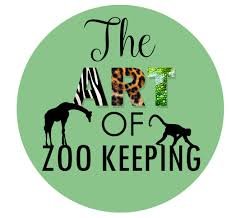Nature has a way of captivating us, with its beauty and complexity always leaving us in awe. One place where this magic comes alive is in zoos. Zoos are not just places to see animals but artistic expressions of nature, blending conservation, education, and fascination. In this article, we’ll explore the art of zoos, uncovering how these living museums create a unique connection between humans and the animal kingdom.
Understanding the Art of Zoo
At its core, the art of a zoo is about more than just housing animals. It’s about creating an immersive experience that educates, inspires, and sometimes even heals. Zoos aim to reflect animals’ natural habitats, mimicking the wild while ensuring their safety and well-being. It’s a delicate balance between education, entertainment, and conservation.
- Educational Purpose: Zoos allow people to learn about species they may never encounter in the wild.
- Conservation Efforts: They play a pivotal role in saving endangered species.
- Entertainment Aspect: Visitors are drawn to the beauty and grace of these animals.
All of these goals are blended harmoniously in the art of zoo design and management.
The History Behind the Art of Zoo
Zoos have come a long way from their origins. Initially, they were simply collections of animals for royalty or entertainment. Over time, as people became more interested in science and conservation, zoos evolved into spaces dedicated to education and preservation.
- Ancient Zoos: Early zoos, known as menageries, date back to ancient civilizations like Egypt and China.
- Modern Zoos: By the 19th century, zoos began to shift their focus from mere spectacle to scientific study and conservation efforts.
Today, the art of zoos revolves around creating environments that resemble animals’ natural habitats, ensuring they are not just exhibited but understood and protected.
Zoo Design: The Blend of Art and Nature
Creating a zoo is challenging. Zoo design is an art form in which architects, landscape designers, and zoologists collaborate to create exhibits that are both functional and aesthetically pleasing. The goal is to design spaces that closely mimic the animals’ natural environment while also being educational for visitors.
Some key elements in zoo design include:
- Landscaping: Mimicking the flora of the animal’s natural habitat.
- Enclosures: Ensuring animals have enough space and comfort.
- Viewing Areas: Providing visitors with clear views without disturbing the animals.
The art of zoo design is essential in maintaining the balance between conservation and public engagement.
The Role of Conservation in the Art of Zoo
One of the primary missions of modern zoos is conservation. They actively participate in breeding programs, reintroductions, and habitat preservation. Many zoos work with international organizations to protect species from extinction.
- Endangered Species Programs: Zoos play a critical role in saving endangered species through captive breeding programs.
- Research and Collaboration: Many zoos contribute to scientific research, working with wildlife experts to study animal behavior, health, and genetics.
Through these conservation efforts, zoos have become more than just places to view animals; they are centers of hope for many species.
Educating the Public: The Heart of the Art of Zoo
Education is a cornerstone of zoo art. Zoos provide a platform for people to learn about animals and their ecosystems, fostering a greater appreciation for wildlife. Many zoos have interactive exhibits, presentations, and workshops that teach visitors about the importance of biodiversity and environmental conservation.
- Exhibits: Interactive displays allow visitors to learn about animal behavior and habitats.
- Workshops: Zoos often offer seminars on conservation and wildlife protection.
- School Programs: Many zoos partner with schools to provide educational field trips and hands-on learning experiences.
By educating the public, zoos help cultivate the next generation of conservationists.
Animal Welfare: A Priority in the Art of Zoo
Animal welfare is at the forefront of zoo operations. The well-being of the animals is paramount, and modern zoos strive to provide the highest standard of care. This involves:
- Enrichment Programs: These activities are designed to stimulate animals mentally and physically.
- Veterinary Care: Zoos have on-site veterinary teams to ensure the animals’ health.
- Naturalistic Enclosures: These enclosures are designed to replicate the animals’ natural environments as closely as possible.
Zoos that master the art of zoos put animal welfare above all else, ensuring that animals live healthy, enriching lives.
A Table of Famous Zoos and Their Contributions
Zoos worldwide have mastered the art of zoos, contributing to conservation, education, and the overall welfare of animals. Here’s a look at some famous zoos and their notable contributions:
Zoo NameLocationNotable Contribution
San Diego Zoo, California, USA Known for its breeding programs for endangered species
Bronx Zoo New York, USA Focuses on wildlife research and education
London Zoo London, UK Pioneered modern zoo design and conservation efforts
Taronga Zoo Sydney, Australia: Active in marine conservation and animal welfare
Singapore Zoo Singapore Famous for its “open concept” design, promoting animal welfare
These zoos are just a few examples of how the art of zoos is being practiced across the globe, blending conservation with visitor engagement.
Challenges in the Art of Zoo
Despite all the benefits, zoos face numerous challenges. Public opinion on zoos can be divided, with some seeing them as vital for conservation and education, while others are concerned about animal captivity. Addressing these challenges is a critical part of the art of zoo management.
- Ethical Concerns: Some argue that keeping animals in captivity, no matter how well they are treated, is inherently wrong.
- Financial Constraints: Running a zoo is expensive, and not all zoos have the funding to provide top-notch care.
- Climate and Environmental Challenges: As climates change, zoos must adapt their habitats to ensure that animals live in suitable environments.
These challenges require innovative solutions to ensure that zoos continue to be a force for good in conservation.
The Future of the Art of Zoo
As we move forward, zoos are evolving. Technology, changing climates, and shifting public opinions influence how zoos operate. The future of the art of zoos looks bright, with exciting new developments on the horizon.
- Virtual Reality (VR) and Augmented Reality (AR): Some zoos are experimenting with VR and AR to provide immersive experiences without disturbing animals.
- Sustainability Initiatives: Many zoos focus on becoming more eco-friendly, using solar power, water recycling, and sustainable materials.
- Expanding Conservation Programs: Zoos are increasingly becoming centers for global conservation efforts, working with governments and organizations to protect wildlife.
The future of the art of zoos is about more than just housing animals—it’s about embracing technology, sustainability, and education to create a lasting impact.
Conclusion: Embracing the Art of Zoo
In conclusion, the art of zoos is a multifaceted discipline that blends conservation, education, and design to create spaces where humans and animals can connect. Zoos have become vital players in the fight against extinction, helping to preserve endangered species and educating the public about the importance of wildlife conservation. With their continued focus on animal welfare, conservation, and public engagement, zoos are works of art that offer more than just a glimpse into the animal kingdom—they offer hope for the future.
By embracing the art of zoos, we ensure that future generations will have the opportunity to experience the wonder and beauty of the animal world while also understanding the importance of protecting it.



































